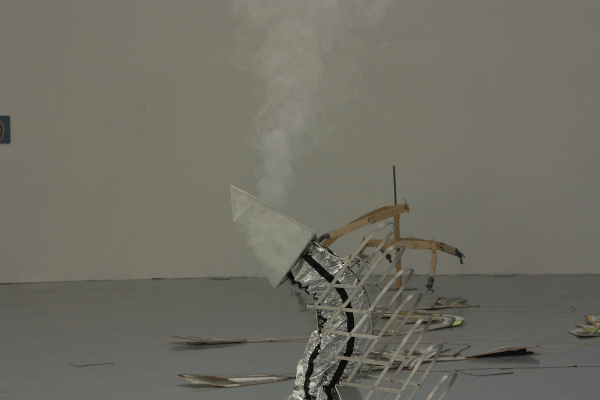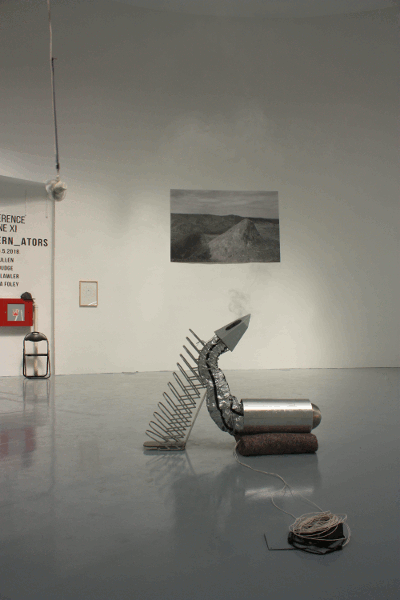
Metal Slug Seer – foreground with Dog Star – suspended from above and Wendy Judge photomontage in background.
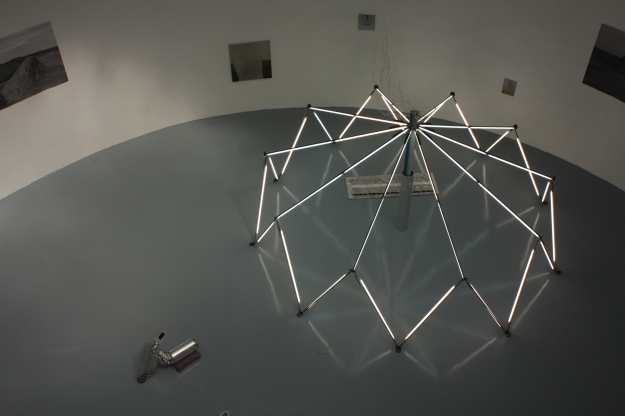
YURT, Infinite Preserve, Metal Slug Seer, With paintings by Gillian Lawler and photomontage by Wendy Judge.
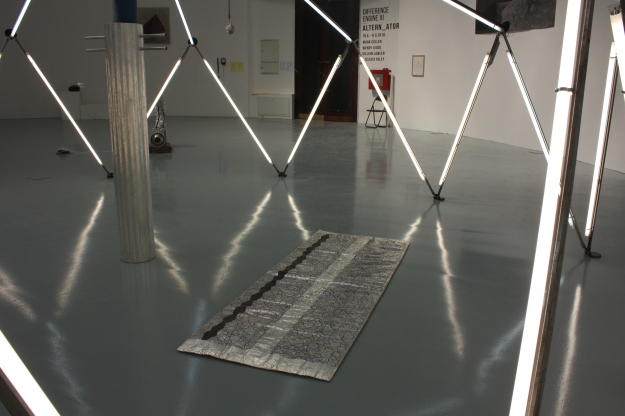
Infinite Preserve – inside YURT – – – – – – – Infinite Preserve considers the isolation and technology necessary for space travel and hibernation. This cyrogenic sleeper pod, made for periods of suspended animation, is decorated using a quasi-crystaline scheme, and ‘branded’ with a blackened out infinite column, which derives from a pre-existing pattern within the drawing. The implications of this technology are considered with the conceit that cryogenic sleeping pods will be available at a consumer level in the future.

YURT (detail) with photomontage by Wendy Judge
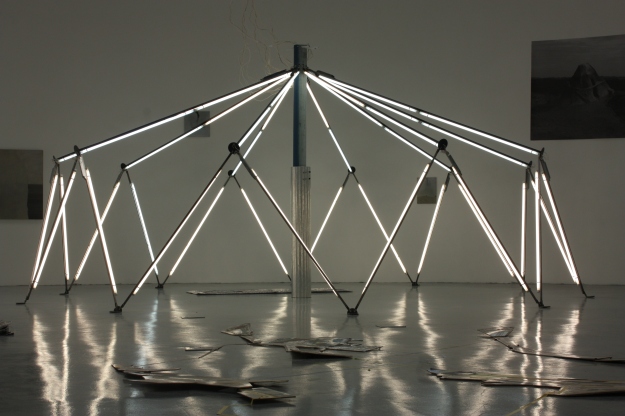
YURT – center, with painted works by Gillian Lawler in the background, a photomotage in backgound and floor based mixed media by Wendy Judge.
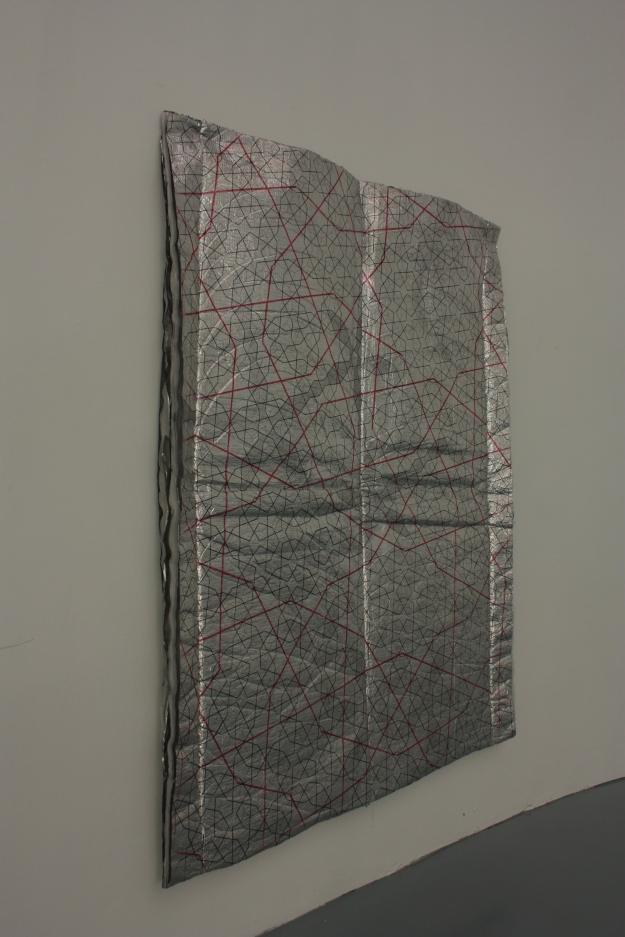
Carpet: The image is a drawing, on a material developed by NASA, made using an Islamic tile pattern taken from the Topaki Scroll, that exhibits fivefold symmetry. Ths type of aperiodic symmetry was believed to be impossible until it was discovered by the British scientist and mathematician Roger Penrose in 1974. Recenctly Harvard Physicist Peter Lu discovered instances of its use throughout the Islamic World as early as the 13th century. Lu discovered a wealth of girih designs with quasi-crystal patterns through an archive search of documented medieval Islamic architecture. He also found that architectural scrolls, such as the Topaki scroll, described how girih designs were assembled from five regularly shaped tiles, including a bowtie shape, a rhombus, a pentagon, an elongated hexagon, and a decagon. The set of five girih tiles decorated with lines that fit together to make regular patterns first appeared about 1200 AD, a time when Islamic mathematics was flowering. The designs grew increasingly complex, and by the 15th century produced near-perfect Penrose patterns found on the Darb-i Imam shrine in Isfahan, Iran.
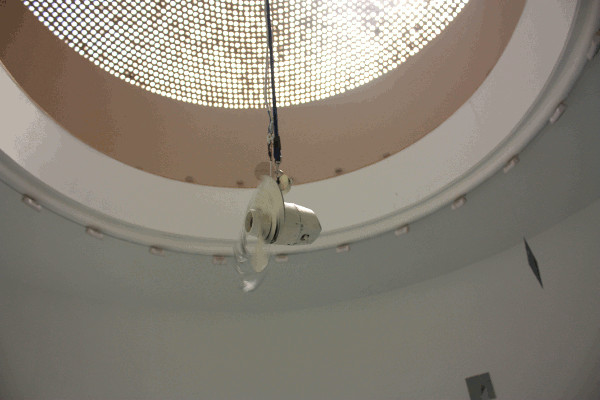
Dog Star
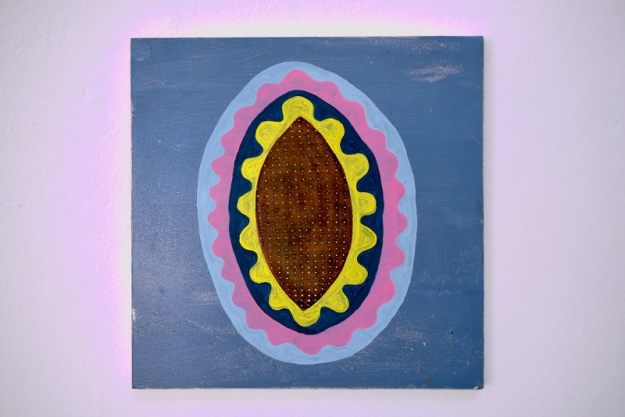
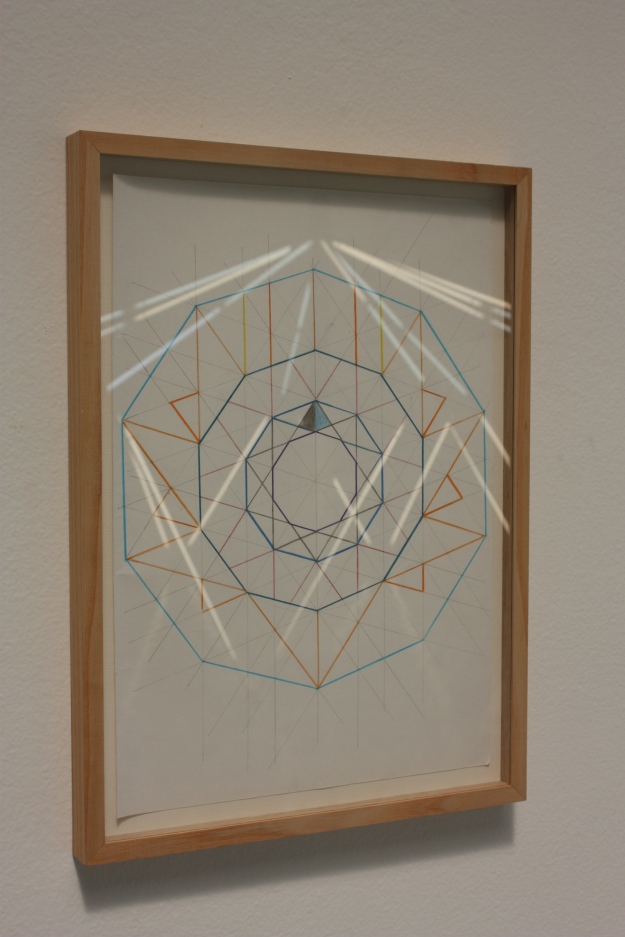
Fox Base Alpha – drawing with YURT reflection
